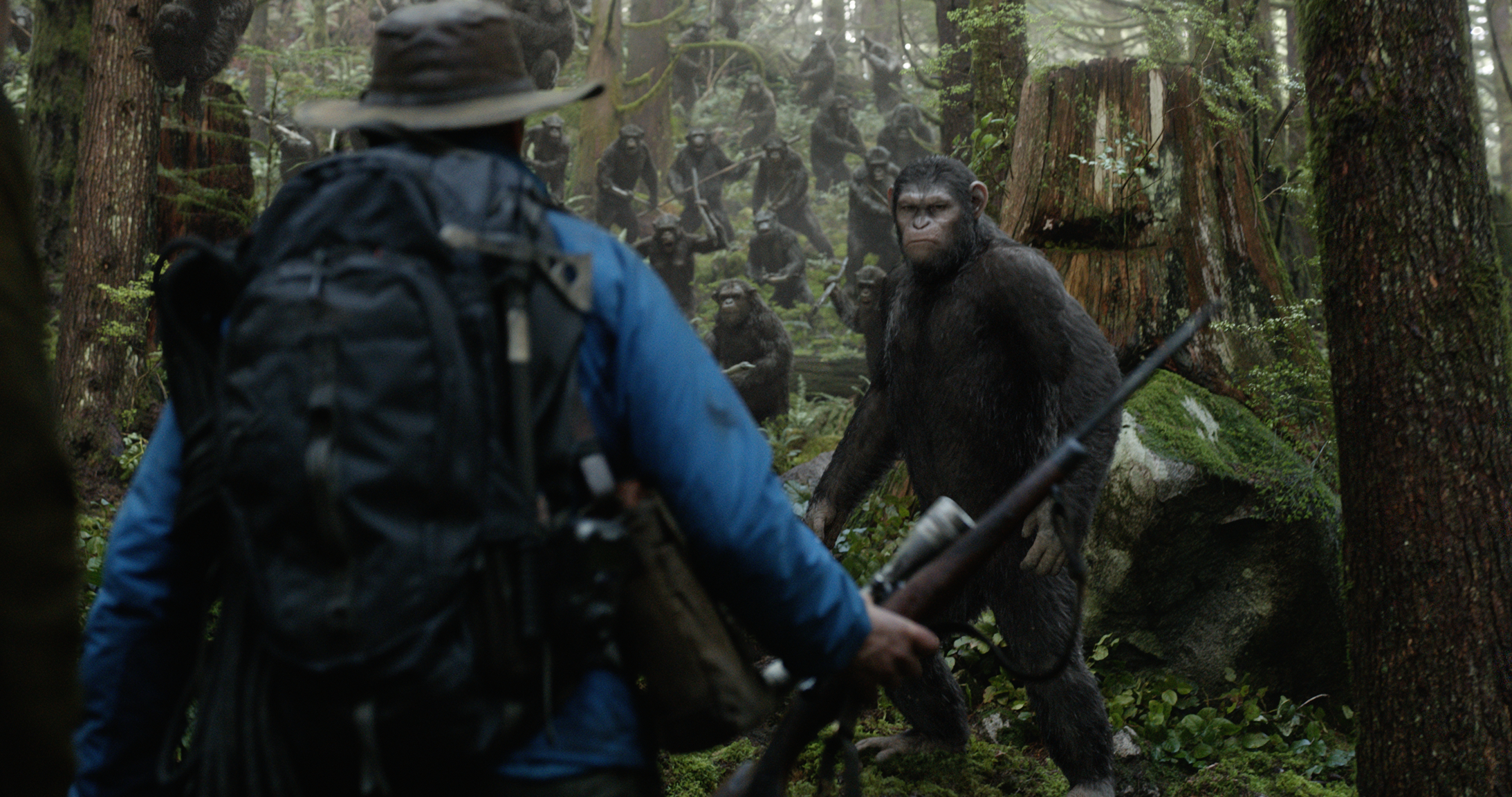 Of all of Dawn of the Planet of the Apes’ successes, the most significant is the way that it frames its conflict. This is not a movie where I found myself rooting for the humans to destroy the apes, or a movie that made humanity out to be the bad guys who destroy everything in their path. Instead, both sides are made to be sympathetic and are simultaneously given reasons to be afraid of each other. It’s a much more realistic and, dare I say it, “human” way to look at war and diplomacy than one would expect in a summer movie, especially one where a whole “side” of the potential conflict is made-up of talking, horse-riding, CGI apes. Instead of man vs. ape, the conflict is between war and peace, and I found myself very much on the side of peace, despite the obvious future of the “Planet of the Apes” and the demands of a big-budget summer release. I actually cared about both sides.
Of all of Dawn of the Planet of the Apes’ successes, the most significant is the way that it frames its conflict. This is not a movie where I found myself rooting for the humans to destroy the apes, or a movie that made humanity out to be the bad guys who destroy everything in their path. Instead, both sides are made to be sympathetic and are simultaneously given reasons to be afraid of each other. It’s a much more realistic and, dare I say it, “human” way to look at war and diplomacy than one would expect in a summer movie, especially one where a whole “side” of the potential conflict is made-up of talking, horse-riding, CGI apes. Instead of man vs. ape, the conflict is between war and peace, and I found myself very much on the side of peace, despite the obvious future of the “Planet of the Apes” and the demands of a big-budget summer release. I actually cared about both sides.
And then the big battle began, and I instantly got onboard with “war.”
Matt Reeves, who directed the picture, gets far less respect than he has earned with his relatively-small three-picture filmography (well, okay, four pictures, but let’s pretend that his 1996 David Schwimmer/Gwyneth Paltrow vehicle The Pallbearer doesn’t exist). His 2008 film Cloverfield often gets derided for its character-manned “shaky-cam,” but deserves recognition for how brilliantly and precisely everything is staged. His next film, a remake of Let the Right One In titled Let Me In, was never able to get out of the shadow of its inspiration. However, if you give it a chance, Let Me In is a beautifully directed film in its own right, with a few new touches (including a virtuoso car crash sequence) that speak to Reeves’s ability.
This is all to say that, when handed the reigns to an epic battle between men and hyper-intelligent apes, Matt Reeves does not drop the ball. One of the first shots of the sequence is a brilliant homage to war films, with a close-up on the apes’ running horses as they get taken down in slow motion by bullets and explosives. The sequence is far more coherent than many modern action sequences without sacrificing style or excitement. One particularly strong shot is situated from behind a tank’s turret. An ape jumps on the vehicle, takes out the man behind the turret, and enters the tank to finish off the driver. All the while, the tank is rotating to its left, revealing the full 360-degree geography of the battle in the background.
In addition to being a well-directed action film with a strong central conflict, Dawn of the Planet of the Apes is also surprisingly risky at times. Aside from a quick recap of the situation at the end of Rise of the Planet of the Apes, the film spends its opening sequence (at least 15 minutes) purely among the apes, with no spoken language. It might be the longest period of pure sign-language and subtitles in a $100+ million movie, period. Even after humans enter the plot, the film spends roughly equal screen time with both groups, showing neither side significant favoritism.
This neutrality is unfortunately derailed a bit with the moment that incites the war, which falls squarely on one side of the conflict. However, at least the moment is caused entirely by an individual, and supports the idea that good and bad exist on all sides of all conflicts. It’s enough care to detail that it doesn’t derail this film, which further cements the Planet of the Apes franchise as one of the better reboots of the 2010’s.